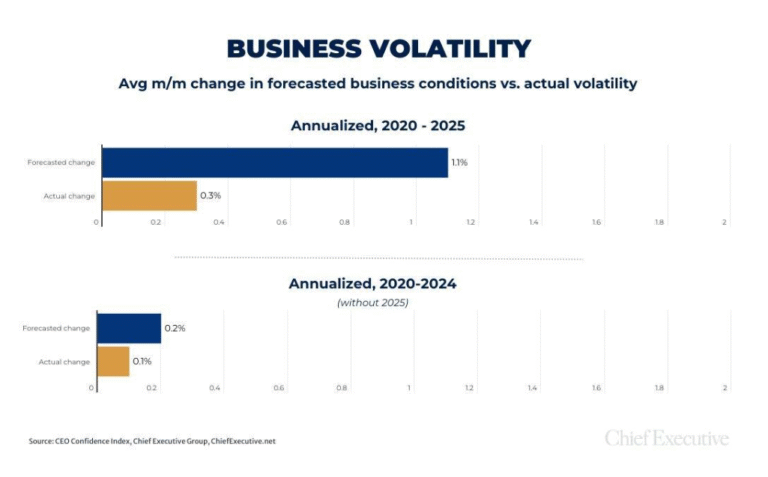
It might sound elementary, but our anecdotal evidence shows that companies actively setting big goals typically leads to business growth and sustainability.
Of course, ‘shooting for the stars’ often entails experiencing failure. I have encountered significant failure in my career, but even when I didn’t hit all of my objectives, keeping a “go big” mentality helped me get closer to where I wanted to be.
This concept has been very evident in the forming of my career path. It was a goal of mine to be a CEO. Fortunately or unfortunately, the jobs I had were not putting me on the right track; I suffered what I considered to be a failure on that front. However, it spurred me to launch Four Pillars Investors. I ultimately achieved my goal, but via a very different path than expected.
Shooting for the stars does not yield rapid, unsustainable growth. Instead, it means different levels of growth for various organizations. With goal-setting based on attainable yet aggressive growth metrics, leaders who shoot for the stars will see long-term results for their company.
As a CEO, you have many important roles, but it is up to you to set the strategy and define culture. A goal-oriented team, coupled with an entrepreneurial mindset, allows you to shoot for the stars with the direction needed to grow and achieve your goals. Here are three strategies that we incorporate in our goal-setting processes to help us achieve our grand ambitions:
John Kotter, considered a foremost authority on corporate leadership and change, calls executive buy-in “critical to making any organizational change happen.”
Strategy is crucial to business growth and sustainability, and business leaders will fail without prioritizing it. An effective CEO works with their management team, company leadership, and everyone in between to achieve goals. This way, it is not just the CEO saying, “We are going to do this as a company, and you are going to be doing that.”
As a founder of Four Pillars, I certainly have personal goals for the organization. That said, during our annual goal-setting meetings, we want to involve the whole team so that each person feels like he or she plays an important part in the process.
Perhaps you have only long-term goals, or maybe you have long- and short-term targets. Regardless of their loftiness, saying them out loud helps: According to research by the Dominican University of California, people who record their goals are 42% more likely to reach them.
To hold both your employees and yourself accountable, communicate your goals at the outset and communicate them frequently. Next, assign responsibilities and get buy-in from the assignees. For example, Shark Tank’s Kevin O’Leary reported that companies that reached their financial objectives did so with goal-setting strategies with specific quarterly objectives.
Relating this back to Four Pillars’ goal-setting meetings, our overarching goal for last year was hitting a specific revenue target. Though each team member is always working on multiple deals and setting acquisition targets would make sense, we thought that setting a revenue target was more meaningful because it allowed team members to see how their work on certain projects moved us toward achieving the company objective.
A study by Partners in Leadership found that 91% of respondents called the creation of accountability a top development need in the workplace. CEOs and lower-level team members must keep goal-setting top of mind so that big-picture objectives don’t fall through the cracks.
To drive progress and change in the company, look to internal teams and managers. Check in with them regularly and tie their efforts to long-term targets so you can keep them accountable. After all, organizational progress only goes as far as you (and your team) do.
At Four Pillars, we did this by creating a number of subtasks that supported the overall goal. We assigned one or more people to each subtask and then saved and distributed the task list. For employees, seeing their names attached to a task is motivating because it gives them a sense of ownership.
Goal-setting is a major motivator for employees because it enables people to meet objectives without micromanagement, according to a recent survey of U.S. marketing professionals. Involving employees in the goal-setting “can galvanize their commitment to achieving them,” Gallup research has found. Set goals as a team so that roles are voluntary and enthusiastically accepted; the combination of motivation and well-defined objectives can “solve a lack of accountability,” Gallup says.
Shooting for the stars requires stretch goals that might feel uncomfortable to some, yet clear goals and achievable growth metrics make it possible. By setting goals for you and your team deliberately, you put everyone on track to get to where they want to be.




Chief Executive Group exists to improve the performance of U.S. CEOs, senior executives and public-company directors, helping you grow your companies, build your communities and strengthen society. Learn more at chiefexecutivegroup.com.
0

1:00 - 5:00 pm
Over 70% of Executives Surveyed Agree: Many Strategic Planning Efforts Lack Systematic Approach Tips for Enhancing Your Strategic Planning Process
Executives expressed frustration with their current strategic planning process. Issues include:
Steve Rutan and Denise Harrison have put together an afternoon workshop that will provide the tools you need to address these concerns. They have worked with hundreds of executives to develop a systematic approach that will enable your team to make better decisions during strategic planning. Steve and Denise will walk you through exercises for prioritizing your lists and steps that will reset and reinvigorate your process. This will be a hands-on workshop that will enable you to think about your business as you use the tools that are being presented. If you are ready for a Strategic Planning tune-up, select this workshop in your registration form. The additional fee of $695 will be added to your total.

2:00 - 5:00 pm
Female leaders face the same issues all leaders do, but they often face additional challenges too. In this peer session, we will facilitate a discussion of best practices and how to overcome common barriers to help women leaders be more effective within and outside their organizations.
Limited space available.

10:30 - 5:00 pm
General’s Retreat at Hermitage Golf Course
Sponsored by UBS
General’s Retreat, built in 1986 with architect Gary Roger Baird, has been voted the “Best Golf Course in Nashville” and is a “must play” when visiting the Nashville, Tennessee area. With the beautiful setting along the Cumberland River, golfers of all capabilities will thoroughly enjoy the golf, scenery and hospitality.
The golf outing fee includes transportation to and from the hotel, greens/cart fees, use of practice facilities, and boxed lunch. The bus will leave the hotel at 10:30 am for a noon shotgun start and return to the hotel after the cocktail reception following the completion of the round.